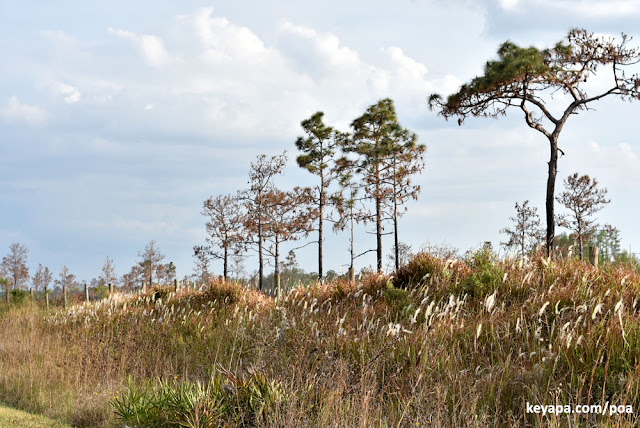I posted awhile back about the importance of grasses in maintaining the dune ecosystems that are the foundation of coastal areas. Without such grasses, we would not have the wide sandy beaches that give people so much joy. In the northeast USA, the predominant species is Ammophila breviligulata, which I also discussed in an earlier post. During our trip to Florida I had ample opportunity to see another species that becomes dominant as one goes farther south.
 |
| Dried seedheads in Tybee Beach |
Like other dune grasses, this species accumulates sand around it, and in fact grows much more rapidly when buried in it. It reproduces mainly by asexual means, by forming buds along the bases, but it also produces seeds. The seeds reportedly can be carried long distances by ocean currents!
 |
| A provider of nesting for various birds at Tybee Beach |
As I walked along Tybee beach, I looked in wonder at the tall dunes that dominated the rear of the beach, each topped by stands of U. paniculata. They looked almost elven amidst the whitish desolate sands, and I gave thanks to these Sentinels of the Dunes, who stand watch to protect the integrity of the beach, and thus gift us such blessings.


















